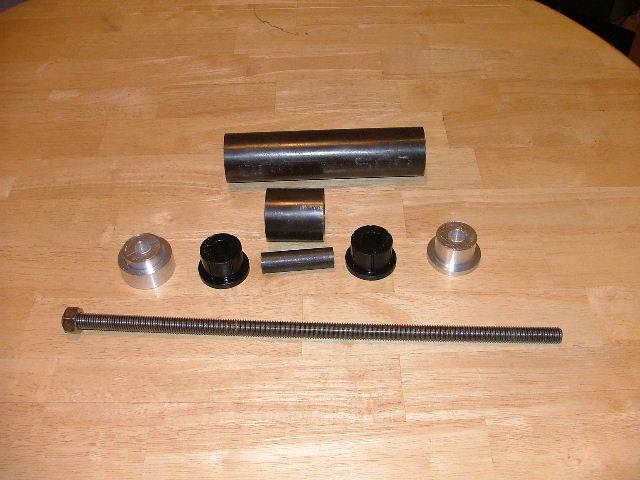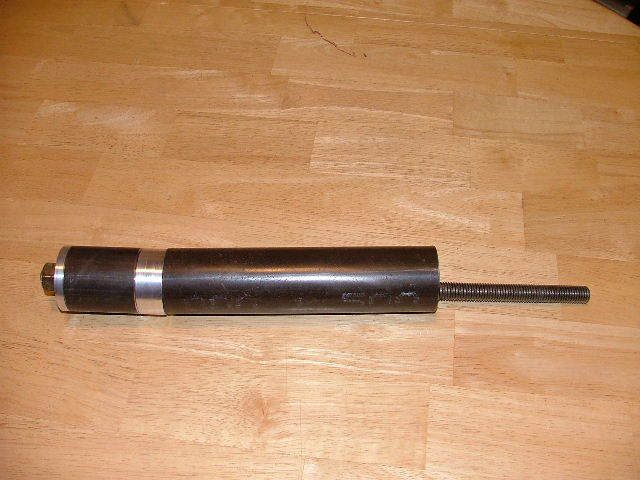GeoTracker90
Adventurer
OK, so this will be my on going build thread. I'll document my attempt at building a home grown, air bagged independent suspension expedition trailer. Why? Well I'm not sure why, but I do know that I LOVE to build trailers and this style of suspension is a challange to design, build and implement. It's also an excuse to build another trailer, and it keeps me out of trouble.
So far I have a pretty good idea of the design that I want to follow as I build this critter. So far I have the bushings gathered up and I'm currently working on building a jig to align them as I weld the trailing arms together. Tonight I was able to fire up the old lathe (1945 Sheldon) and put a couple discs of aluminum on a strict weight reducing diet. One lost just a little more weight than the other though.

I need to get some more shop time and make them a set of twins. I bored out the center hole to 9/16" so accept the threaded rod that will hold the assembly alligned as I work on it.

I can't wait to get the other set done so that I can finish assembling the skewer.

With any luck I'll order a couple spindles in the a.m. and they will show up before the weekend. I guess I had start looking at buying some tubing for the arms as well. I'll post more as the build continues.
Mike
So far I have a pretty good idea of the design that I want to follow as I build this critter. So far I have the bushings gathered up and I'm currently working on building a jig to align them as I weld the trailing arms together. Tonight I was able to fire up the old lathe (1945 Sheldon) and put a couple discs of aluminum on a strict weight reducing diet. One lost just a little more weight than the other though.
I need to get some more shop time and make them a set of twins. I bored out the center hole to 9/16" so accept the threaded rod that will hold the assembly alligned as I work on it.
I can't wait to get the other set done so that I can finish assembling the skewer.
With any luck I'll order a couple spindles in the a.m. and they will show up before the weekend. I guess I had start looking at buying some tubing for the arms as well. I'll post more as the build continues.
Mike
